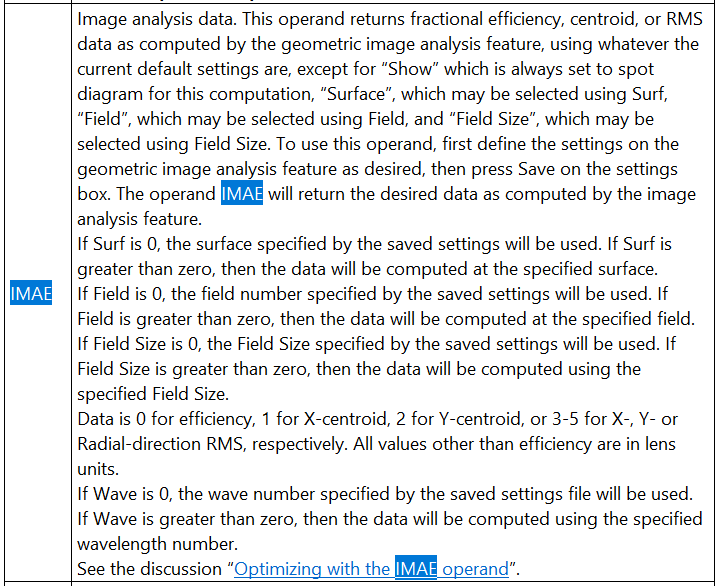Hello Sandrine,
Is there also a way to optimize the smallest overall spot of the whole field? I can’t find the right merit function operand.
Thanks in advance!
Solved
How to optimize the smallest overall spot of the whole field?
Best answer by Sandrine Auriol
Hi Lea
Have a look at the IMAE operand. That operand is basically returning data from the geometric image analysis feature. You give the size of the field and it returns the image as a spot diagram. Then the IMAE operand can calculate the size of the spot, etc….
You can optimize for the smallest spot.

This operand is used for multimode fiber coupling: How to model multi-mode fiber coupling
Let us know if you still have questions.
Enter your E-mail address. We'll send you an e-mail with instructions to reset your password.





